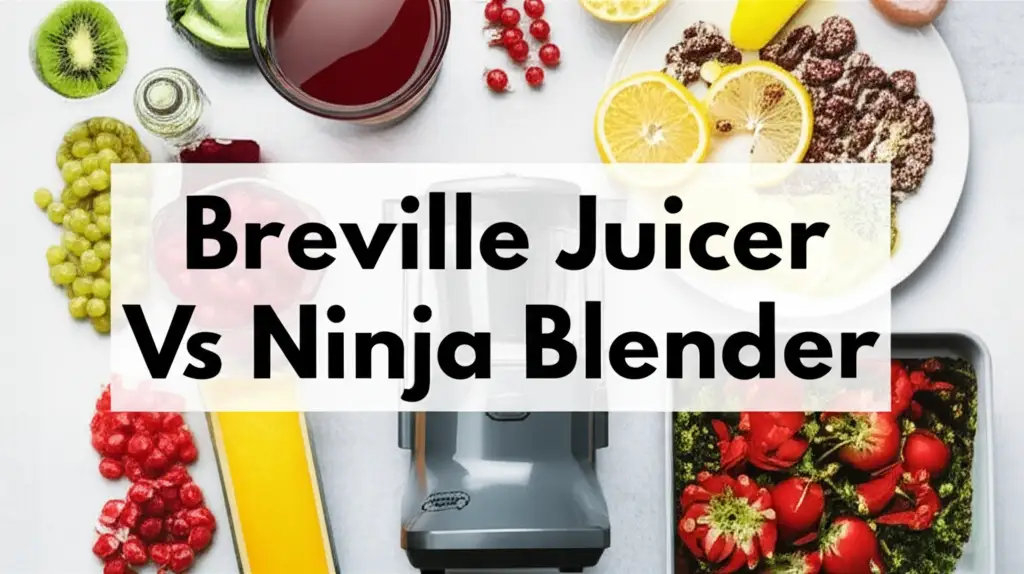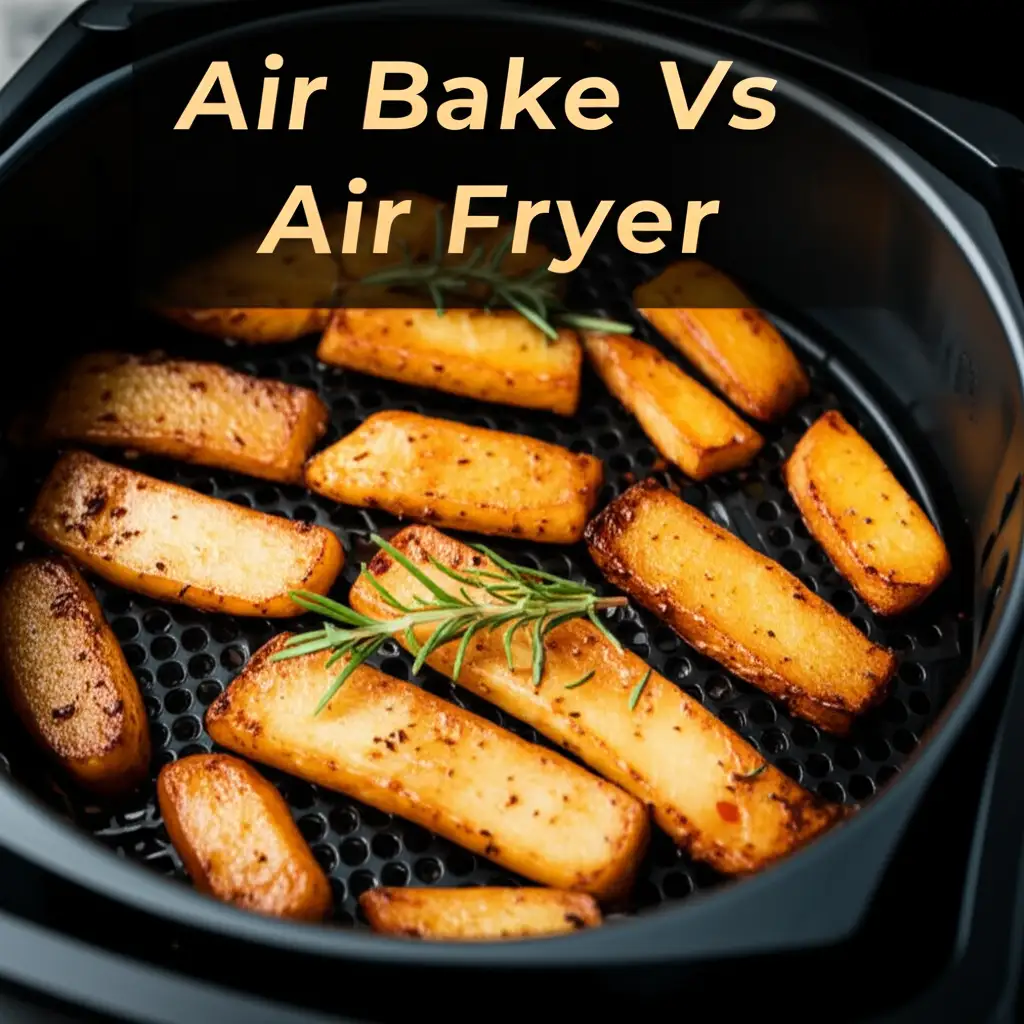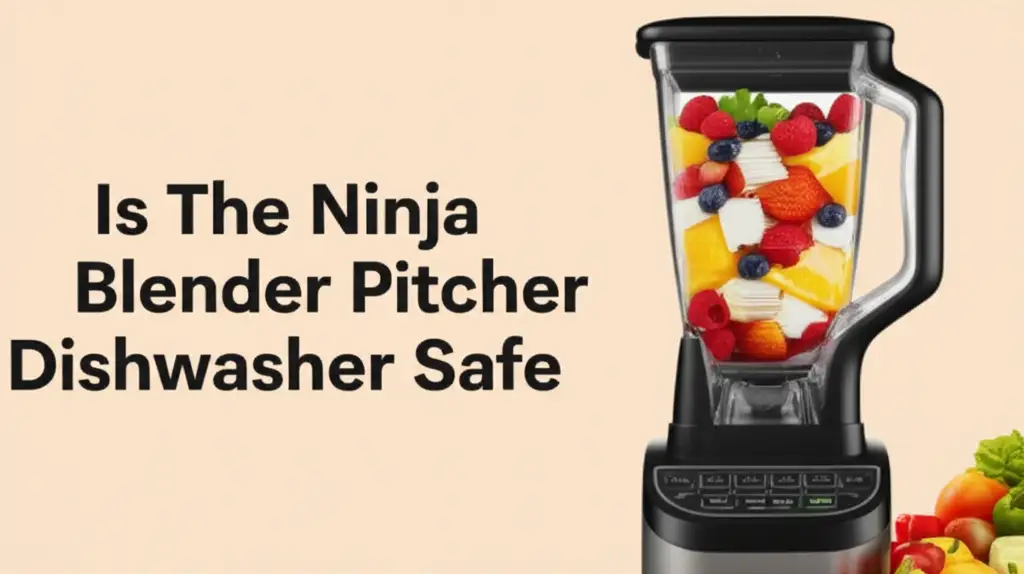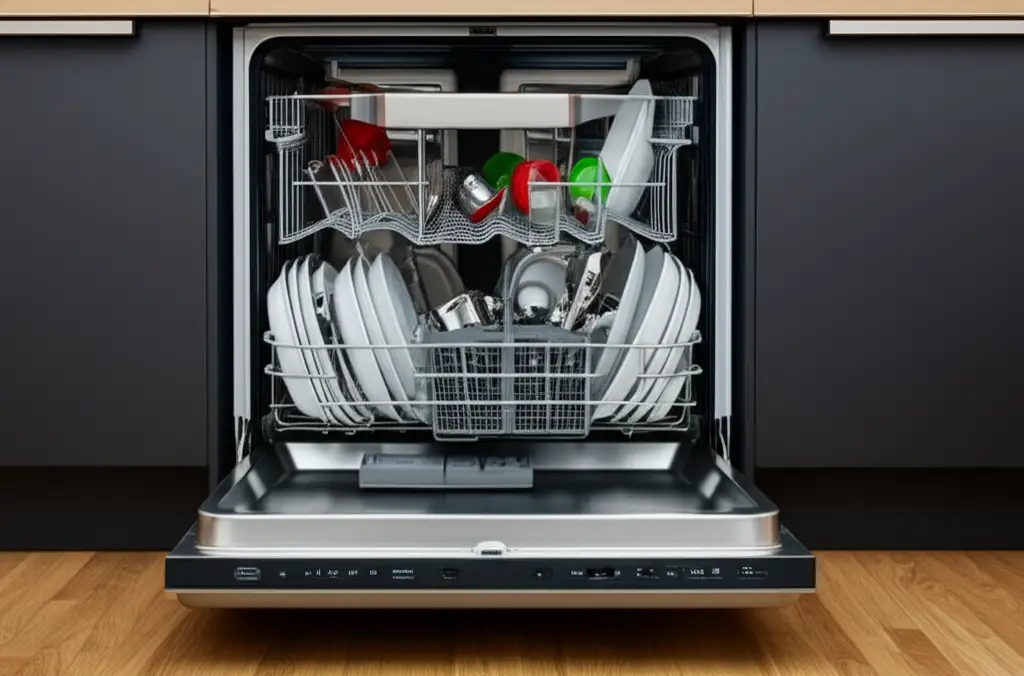· Elira Thomsen · Kitchen Appliances · 15 min read
Breville Juicer Vs Ninja Blender

Breville Juicer Vs Ninja Blender: Your Ultimate Kitchen Showdown
Imagine standing in your kitchen, fresh fruits and vegetables ready. You want a healthy drink, but a question hangs in the air: Should you make a vibrant, pulp-free juice or a thick, nutritious smoothie? This decision often leads to another: Do you need a dedicated juicer or a powerful blender? Today, we will explore the Breville Juicer Vs Ninja Blender debate. These two appliance giants offer distinct paths to wellness.
Choosing the right appliance depends on your health goals and lifestyle. Breville juicers excel at extracting pure liquid from produce. Ninja blenders are champions of versatility, creating smoothies, sauces, and more. This article will break down their core functions, performance, and features. We will compare their design, ease of use, and cost. By the end, you will have a clear understanding of which machine best fits your kitchen.
Takeaway
- Breville Juicers: Ideal for pure, pulp-free juice with maximum nutrient density. They are specialists in liquid extraction.
- Ninja Blenders: Best for whole-food smoothies, retaining all fiber. They offer versatile food processing capabilities beyond just drinks.
- Consider Your Diet: Choose based on whether you prefer clear juice or thick, fiber-rich blends.
- Assess Counter Space: Juicers and blenders have different footprints.
- Evaluate Cleaning Effort: Some appliances are easier to clean than others.
When deciding between a Breville juicer and a Ninja blender, the best choice depends on your specific needs. A Breville juicer extracts liquid, separating pulp for clear juice. A Ninja blender processes whole ingredients, including fiber, into a thick, smooth consistency. Your preference for juice or smoothies guides this selection.
Understanding Breville Juicers: The Art of Juice Extraction
Breville juicers are well-known for their efficiency in extracting juice. Many models use centrifugal force to quickly separate liquid from pulp. This process makes fresh juice in minutes. Breville has a strong reputation for performance and durability in the juicing world.
When you think of pure, vibrant juice, a Breville juicer often comes to mind. These machines are designed to get the most liquid out of fruits and vegetables. They handle hard produce like carrots and apples with ease. This focus on juice extraction sets them apart.
How Breville Juicers Work
Most Breville juicers are centrifugal models. These juicers feature a fast-spinning mesh filter with sharp blades. You feed produce into a chute. The blades grate the produce at high speed. Centrifugal force then pushes the pulp against the mesh. Liquid passes through, and the dry pulp collects in a separate container.
This rapid process makes juicing quick. You get fresh juice almost instantly. The powerful motors ensure efficient extraction. Some Breville models also come with wider feed chutes. This feature reduces prep time, letting you put in whole fruits or larger pieces.
Key Features of Breville Juicers
Breville juicers often boast powerful motors, typically ranging from 700 to 1200 watts. This power ensures effective juice extraction from various produce types. They also feature multiple speed settings. Low speeds work well for soft fruits, while high speeds handle harder vegetables. A foam separator is another common feature. It ensures your juice has less foam, providing a smoother drinking experience.
Cleaning is a common concern for juicers. Breville designs many parts to be dishwasher safe, which simplifies cleanup. For specific cleaning tips, you can find guides like how to clean Breville juicer bje510xl 2. The build quality is generally robust, using stainless steel components. This construction ensures longevity for your juicer.
Exploring Ninja Blenders: The Power of Versatility
Ninja blenders have gained immense popularity for their multi-purpose capabilities. They do more than just blend smoothies. Many Ninja models come with various attachments. These attachments allow for food processing, dough mixing, and even making single-serve drinks.
Ninja blenders are known for their strong motors and unique blade designs. These features help them crush ice and break down tough ingredients quickly. When you need a kitchen workhorse, a Ninja blender is a strong contender. It offers solutions for many culinary tasks.
How Ninja Blenders Operate
Ninja blenders use powerful motors and stacked blade assemblies. These blades create a vortex, pulling ingredients down for thorough blending. Unlike juicers, blenders keep all parts of the fruit or vegetable. This includes the fiber, which makes for a thicker end product. You load ingredients into the pitcher or cup. The powerful motor then pulverizes everything into a smooth consistency.
Many Ninja models feature Auto-IQ technology. This technology provides pre-programmed settings for specific tasks. These settings include smoothies, crushing ice, and purees. The blender automatically adjusts speed and pulsing patterns. This smart design makes blending simple and consistent.
Key Features of Ninja Blenders
Ninja blenders come in various configurations, from personal blenders to full-size systems. Their motors often range from 1000 watts to over 1500 watts. This high wattage allows them to handle tough ingredients like nuts and frozen fruits. The stacked blade design is unique to Ninja. It helps break down ingredients from top to bottom. This ensures even blending without unblended chunks.
Ninja systems often include multiple containers. You might get a large pitcher for family-sized blends. Smaller cups with to-go lids are perfect for individual smoothies. Cleanup is usually straightforward. Many pitchers and blades are dishwasher safe. For details on care, you can learn is the ninja blender pitcher dishwasher safe. This makes daily use very convenient.
Juicing vs. Blending: The Fundamental Differences
The core difference between juicing and blending lies in the end product. A juicer separates liquid from solid pulp. A blender combines all ingredients, including the fiber. This distinction greatly affects the nutritional profile and texture of your drink. Understanding this fundamental difference helps you choose the right appliance.
Many people think juicing and blending are the same. They are not. Each method offers unique benefits based on how it processes food. Your body interacts with juice and smoothies differently. This impacts digestion and nutrient absorption.
The End Product: Juice vs. Smoothie
When you use a Breville juicer, you get clear, pulp-free juice. This juice is essentially concentrated liquid nutrients. It quickly absorbs into your bloodstream. There is no fiber, so your digestive system does not need to work to break down solids. This makes juice easy on the stomach. It offers a fast nutrient boost.
A Ninja blender produces a smoothie. Smoothies contain all the fiber from the fruits and vegetables. This fiber gives smoothies a thicker texture. They are more filling than juice. You consume the whole food, just in a liquified form. Smoothies often feel more like a meal replacement.
Nutritional Impact and Fiber Content
Juice from a Breville juicer offers a rapid intake of vitamins, minerals, and enzymes. Because the fiber is removed, these nutrients absorb quickly. This can be beneficial for specific health goals or for those with digestive sensitivities. However, removing fiber means you miss out on its benefits. Fiber aids digestion, helps regulate blood sugar, and promotes fullness.
Smoothies, made with a Ninja blender, retain all the dietary fiber. This means they digest more slowly. The fiber helps stabilize blood sugar levels, preventing energy spikes and crashes. Smoothies also keep you feeling full longer, which can aid in weight management. They provide a fuller spectrum of nutrients, including the benefits of whole foods. If you are comparing it to a different type of juicer, a Ninja cold press juicer pro vs Omega could offer different fiber retention results, as cold press juicers are designed for higher yield and nutrient preservation than centrifugal ones.
Performance Comparison: Power, Speed, and Efficiency
When comparing a Breville juicer and a Ninja blender, performance is key. We need to look at motor power, speed settings, and how efficiently each machine processes ingredients. Both brands offer powerful motors. However, their power is utilized for different purposes.
Understanding how each machine performs its primary task helps determine its value. Some appliances are faster for specific jobs. Others might be quieter or more effective at handling diverse ingredients.
Motor Power and Speed
Breville juicers typically feature powerful motors, often ranging from 700 watts to 1200 watts. This power is necessary for the high-speed centrifugal force. They need to spin fast to separate juice from pulp effectively. Higher wattage in a Breville juicer means it can process harder produce more quickly. Speed settings usually vary, allowing you to optimize for soft fruits or tough vegetables.
Ninja blenders often boast even higher wattage, commonly 1000 watts to 1500+ watts. This raw power is crucial for pulverizing whole ingredients, including ice and frozen fruits. The higher wattage and powerful blades ensure a smooth consistency in smoothies. Auto-IQ programs adjust speed and pulse for specific tasks. This automation makes the blending process highly efficient.
Noise Levels and Operation
Breville centrifugal juicers are known for being quite loud. The high-speed spinning motor and grating action create significant noise. This is a trade-off for their speed and efficiency. If you plan to juice early in the morning, this noise can be a factor. The operation is very fast, meaning the loud period is short.
Ninja blenders, especially their high-powered models, can also be noisy. Blending ice or frozen ingredients generates considerable sound. However, their noise profile might differ. Some models have sound-dampening features. The noise typically lasts for a shorter duration compared to continuous juicing. Most blenders have pulse functions, which means intermittent noise rather than constant loud operation.
Design, Durability, and Ease of Use
The physical aspects of an appliance matter significantly. We look at countertop footprint, build quality, and how easy the machine is to assemble and clean. Breville and Ninja both offer a range of designs. Each brand focuses on different aspects of user experience.
A well-designed appliance fits seamlessly into your kitchen. It should be durable enough to withstand regular use. Ease of use, especially cleaning, impacts how often you will actually use the machine.
Countertop Footprint and Aesthetics
Breville juicers come in various sizes. Some models are compact, designed for smaller kitchens. Others are larger, built for heavy-duty juicing. They often feature sleek stainless steel finishes. This gives them a professional and modern look. Consider the space you have available on your counter. A wider chute might mean a bulkier machine.
Ninja blenders also vary widely in size. You can find compact personal blenders that take up minimal space. Full-size blender systems with multiple pitchers can be quite large. Ninja often uses a combination of durable plastic and stainless steel. Their designs tend to be functional and modern. Think about where you will store the blender and its attachments.
Cleaning and Maintenance
Cleaning is a critical factor for both juicers and blenders. Breville juicers, particularly centrifugal ones, can be a bit more involved to clean. The mesh filter basket needs thorough scrubbing to remove stuck pulp. While many parts are dishwasher safe, manual cleaning of the mesh is often recommended. Guides like how to clean Breville juicer bje510xl 2 offer detailed steps. The pulp container is usually easy to empty and rinse.
Ninja blenders are generally easier to clean. Their smooth pitchers and blades can often be rinsed clean or run in the dishwasher. Many models offer a self-cleaning feature where you blend warm water and a drop of soap. The blade assembly can sometimes be tricky around the sharp edges. For optimal hygiene, learning how to clean Nama juicer 2 or any similar appliance can extend its life and performance. For specific details on your model, always check the user manual.
Price Point and Value Proposition
Cost is a significant factor in any appliance purchase. Both Breville juicers and Ninja blenders offer models across different price ranges. The value you get depends on your budget, desired features, and how often you plan to use the machine. Consider not just the initial purchase price, but also the long-term benefits.
Investing in a quality appliance can save you money over time. It can also encourage healthier habits. Let us break down the typical cost structures for each brand.
Initial Investment
Breville juicers typically range from $100 for basic centrifugal models to $300-$400 for more advanced ones. Some specialized Breville juicers, like cold press models (if they offer them, though centrifugal are more common), might cost even more. The price reflects motor power, build materials, and added features like multiple speed settings or wider feed chutes. You are paying for a specialized machine designed for efficient juice extraction.
Ninja blenders offer a wide range of prices. You can find personal blenders for as low as $50-$80. Full-size blender systems with multiple functions and powerful motors can cost anywhere from $150 to $300+. Ninja often bundles accessories, like additional cups or food processor attachments. This makes them appear as a more comprehensive kitchen solution for the price.
Long-Term Value and ROI
The long-term value of a Breville juicer comes from its ability to produce fresh, nutrient-dense juice daily. If you consistently buy bottled juices, investing in a juicer can lead to significant savings and better health. The durability of Breville machines means they often last for many years. This makes them a worthwhile investment for serious juicers.
Ninja blenders offer long-term value through their versatility. One Ninja system can replace multiple kitchen gadgets. It serves as a blender, food processor, and often a dough mixer. This reduces the need for other appliances. If you enjoy smoothies, meal prepping, or making homemade sauces, a Ninja blender provides excellent utility. Its multi-functionality can save you money and counter space in the long run.
Who Should Buy What? Tailoring Your Choice
Making the right choice depends entirely on your individual needs and lifestyle. There is no universally “better” machine between a Breville juicer and a Ninja blender. Each excels in different areas. Think about your dietary preferences, your daily routine, and your kitchen space.
Consider what you will use the appliance for most often. Do you crave pure, invigorating juice, or do you prefer the satisfying fullness of a smoothie? Your answer guides the decision.
Ideal User for a Breville Juicer
A Breville juicer is perfect for individuals who:
- Prioritize pure juice: You want concentrated nutrients without the fiber.
- Seek fast absorption: You need a quick energy boost or easy digestion.
- Are committed to juicing: You plan to make fresh juice regularly.
- Enjoy specific juice recipes: You like making green juices or fruit blends.
- Are okay with cleanup: You understand that juicers require dedicated cleaning.
If your primary goal is to consume high volumes of fresh, pulp-free juice, a Breville juicer is your go-to. It efficiently extracts liquid, delivering a potent dose of vitamins and minerals. It is an ideal choice for juice cleanses or daily nutrient shots.
Ideal User for a Ninja Blender
A Ninja blender is an excellent choice for individuals who:
- Love smoothies: You want a thick, filling, fiber-rich drink.
- Need versatility: You want to blend, chop, puree, and potentially mix dough.
- Value whole foods: You prefer consuming entire fruits and vegetables.
- Are looking for meal replacements: Smoothies often serve as quick, nutritious meals.
- Have limited kitchen space: One machine can perform many functions.
If you are someone who enjoys a variety of blended creations, from protein shakes to nut butters, a Ninja blender offers unmatched flexibility. It is a fantastic option for busy families or anyone who appreciates multi-functional kitchen tools.
FAQ Section
Can a Ninja blender make juice like a juicer?
A Ninja blender cannot make “juice” in the traditional sense of a juicer. It blends whole ingredients, creating a smoothie that contains all the pulp and fiber. A juicer separates the liquid from the solids. You can add water to a Ninja blender to make a thinner consistency, but it will still be a whole-food blend, not clear juice.
Can a Breville juicer make smoothies?
No, a Breville juicer is designed to extract liquid and separate pulp. It cannot make smoothies. To make a smoothie, you need to retain all the fiber from the fruits and vegetables. A juicer removes this fiber. You would need a blender to create a smoothie texture.
Which is easier to clean?
Generally, a Ninja blender is easier to clean than a Breville centrifugal juicer. Blender pitchers often rinse clean or are dishwasher safe. Juicers, especially their mesh filter baskets, require more meticulous scrubbing to remove pulp residue. While many juicer parts are dishwasher safe, the fine mesh screen often needs manual attention.
Which machine extracts more nutrients?
Both machines deliver nutrients, but in different forms. A Breville juicer provides highly concentrated, quickly absorbable nutrients because fiber is removed. A Ninja blender retains all nutrients, including beneficial fiber, which aids digestion and promotes fullness. Neither machine “extracts” more nutrients overall; they simply present them differently.
Are Breville juicers and Ninja blenders loud?
Yes, both Breville centrifugal juicers and high-powered Ninja blenders can be quite loud during operation. Breville juicers generate noise from their high-speed motor and grating action. Ninja blenders create noise from powerful blending, especially when crushing ice or frozen ingredients. The noise level is a trade-off for their efficient performance.
Which one is better for weight loss?
Both can support weight loss depending on how you use them. Smoothies from a Ninja blender can be more filling due to fiber, aiding satiety and reducing overall calorie intake. Juice from a Breville juicer offers quick nutrient delivery but lacks fiber, so it may not keep you full as long. Focus on nutrient-dense ingredients and portion control with either machine.
Conclusion
Choosing between a Breville Juicer Vs Ninja Blender ultimately comes down to your personal health objectives and daily habits. A Breville juicer excels at delivering pure, concentrated juice, perfect for rapid nutrient absorption and detoxification. It is a specialist tool for dedicated juicing enthusiasts. You gain clear, invigorating beverages.
On the other hand, a Ninja blender is a versatile kitchen powerhouse. It creates fiber-rich smoothies, processes food, and tackles many culinary tasks. It suits those who value whole-food consumption, meal replacement options, and multi-functional appliances. Both machines offer distinct paths to a healthier lifestyle. Consider whether you prefer the quick boost of pure juice or the satisfying fullness of a smoothie. Your choice will be an excellent investment in your kitchen.





